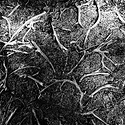relistan
Member
For purposes of attempting to get peroxide bleaches to work better with very hardened emulsions, I want to intentionally try to soften the emulsion ahead of bleaching. The problem with very hardened emulsions (e.g. ADOX Scala/Silvermax or Fomapan R100) is that they are damaged by the escape of oxygen gas during the oxidation process in peroxide bleach. My belief from lots of testing is that the hardened emulsions resist the gas too much, and allow larger bubbles to form before breaking through. This in turn puts large holes in the emulsion (large being relative).
Obviously emulsion softening is a thing that has to be done carefully and I'm sure I will screw up plenty while attempting it. What I'm looking for are chemicals that will have that effect. Please don't try to convince me it's a bad idea. I already think it's probably a bad idea but want to try it and see how bad.
So far I know only of glycerin/glycerine/glycerol depending on where you are from. I have not tried it yet. I did try propylene glycol and isopropyl alcohol, neither of which seem to do much in this regard.
Anything else worth trying? Ideally non-toxic or low toxicity chemicals.
Obviously emulsion softening is a thing that has to be done carefully and I'm sure I will screw up plenty while attempting it. What I'm looking for are chemicals that will have that effect. Please don't try to convince me it's a bad idea. I already think it's probably a bad idea but want to try it and see how bad.
So far I know only of glycerin/glycerine/glycerol depending on where you are from. I have not tried it yet. I did try propylene glycol and isopropyl alcohol, neither of which seem to do much in this regard.
Anything else worth trying? Ideally non-toxic or low toxicity chemicals.












